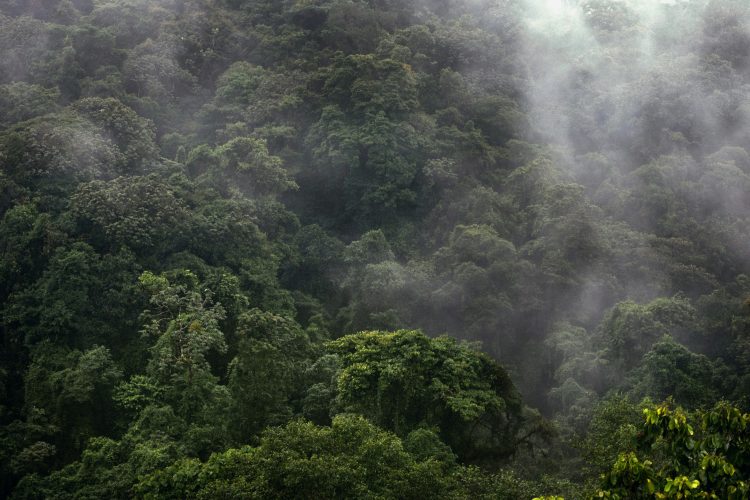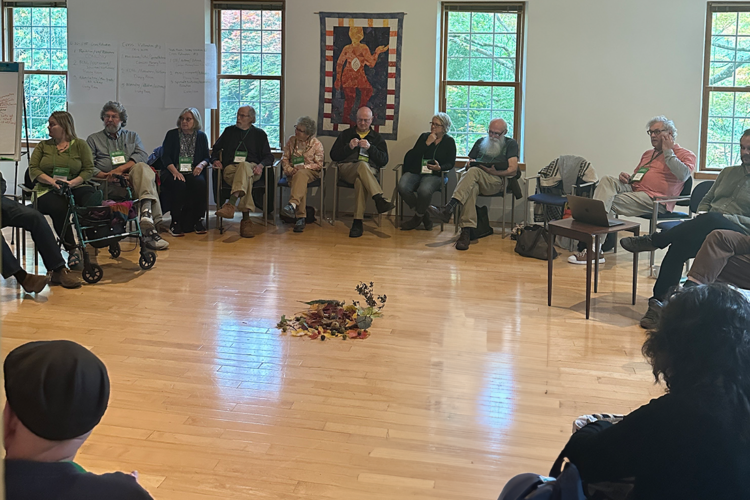Review: A Sustainable Life: Quaker Faith and Practice in the Renewal of Creation

In 2014, we saw many hopeful and encouraging signs that the world is beginning to “get it” about climate change. We also saw heartbreaking events, species slipping closer toward extinction, major disruptive weather events, and the ever-pervasive challenges of power and money at work in the systems we swim in. A growing number of concerned Friends, caring others, meetings, organizations, and more are joining the conversation and seeking a common dialogue about sustainable solutions. There is so much to learn, so much need, so many obstacles, and so much urgency that we risk being immobilized: It can be a challenge to get clear about which issue we should take on and where to begin.
In his book, A Sustainable Life: Quaker Faith and Practice in the Renewal of Creation, Douglas Gwyn encourages Friends to begin with the stillness of our roots; he invites us to settle and be nourished by the deepest movement of spirit. He makes the case—and makes it well, in my opinion—that a truly sustainable life begins with the first motion of love and blossoms in reverent right order–in us, our meetings, and we hope, throughout our world.
Gwyn’s book is inspiring (especially if you love reading the writings of early Friends), but he doesn’t trade reality for a purely hopeful view. Gwyn is realistic about what is needed and offers a well-structured process of discernment for Friends, designed to help us seek clarity within ourselves and explore continuing light in our meetings. He uses the image of a wheel with spokes to present 16 energies along eight axes that move sustainable living forward in the Friends tradition. These pairs of qualities include light and seed; worship and ministry; personal integrity and discernment; equality and community; ministers, elders, clerks and group discernment; unity and differentiation; peace and nonviolent action; and simplicity and sustainability. And, as Gwyn says on page 149, “The empty center represents the place of unknowing we experience as we live within these tensions and paradoxes.”
Ultimately, sustainability means living from a place of peace and light at our deepest levels, radiating outward through the concentric rings of our influence in the world. And this approach moves us toward a greater sense of wholeness for the world on all levels, not into specialized factions of folks siloed around different issues. Sustainable living is healed living for all. As Gwyn offers on pages 24-25, “The horizon of destiny revealed in the last half-century is the urgent need for the human race to find a sustainable balance with the resources and life systems of the earth. But that destiny will not be reached without a just, equitable, and peaceful society among humans.”
This book is a deeply thoughtful work that is both rich in history and Friends tradition and long in structure and opportunities for discerning what it means to live a truly sustainable life, individually and corporately. Readers learn where the seeds of our faith and practice originate; they are invited to consider the meaning and effects of our dearest testimonies; they hear the voices of formative Friends who have shaped our tradition and given evidence of the light in preceding generations—George Fox, John Woolman, Thomas Kelly, William Taber—and may be introduced for the first time to voices of contemporary Friends and lesser-known early Friends as well.
My experience of reading A Sustainable Life was one of savoring. I found I was unable to read the book quickly and wanted to give it good seasoning time as I reflected on stirring passages and let my own ideas stir around and rise in conversation with all that Gwyn so effectively presents. I would encourage any Friend who yearns to align action with spirit to spend time with this book. Perhaps by allowing our roots to be nourished and nurtured in this way, we will blossom into a gathered sense of sustainable living we can share and model for the world. Gwyn makes this sound achievable and worth striving for: “The mind centered in the light sees the wisdom of God in the natural order. The heart turned to the light shares God’s compassion for all creatures. We find ourselves in the oneness and common interest of all things and strive to play our part.” (p. 64)

